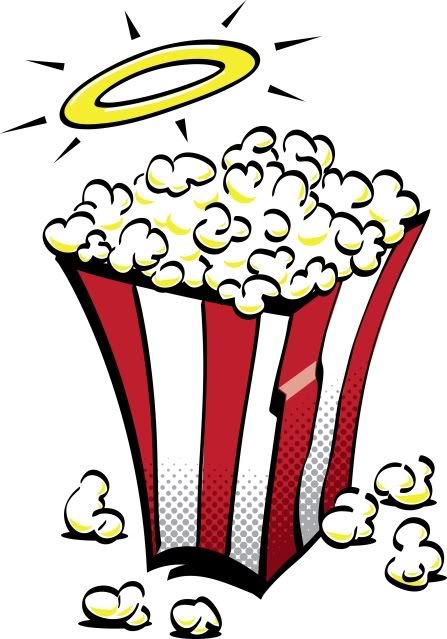
April 9, 2010
Flags of Our Fathers (2006)
Should I see it?
Nope
Nope
Short Review: Previous generations got John Wayne, we get a self-hating drunk crying in his beer.
Wake me up if they decide to make a movie about Iwo Jima. This about sums up my experience screening this distracted choppy, dropped ball of a movie.
Clint Eastwood’s film has less to do with the actual battle in the black sands of that remote island and more to do with the marketing campaign back home. The three surviving men, John "Doc" Bradley, Ira Hayes and Rene Gagnon who raised the flag in the famous picture from Iwo Jima are used by the war department as spokesmen for the war bond drive. The film treats this necessity like it was a cynical, terrible assault on human dignity. It probably made the men uncomfortable to be remembered for something as simple as raising a flag, but the goals of the marketing were good. Eastwood plays these segments like the men were being leveraged to sell Coca-Cola.
The bulk of the film shows these men coping with their guilt. Great, Oprah has made a war movie. This is why I loathe this film. People don't read much anymore, and they certainly don’t consume a great deal of history when they do. Films such as this stand as historical monuments. People will know what they know about Iwo Jima because of this film. What will people get from this? We fought, but we didn’t have a clear moral goal and a cynical government back home duped the people into supporting our efforts. Our soldiers were pawns guilty of their actions and shamefully dismissed by a belligerent public. Since the film serves to undermine the concept of heroes and a moral war, the audience will learn little about the actual battle. They also won't come to understand why we fought and why it is critical for us to win.
The film is spread out over decades and told in a series of disruptive and unrelated flashbacks. It is like watching television with someone else holding the remote who is very bored. We’re watching a war movie…oh, wait now it’s a family drama…wait, it’s a halftime show…opps, more war…wait, isn’t this the Alcoholics Anonymous Channel? If you don’t like a part of the film, wait a minute and Clint will change gears. Since the film never spends too much time in one place all of the scenes are sucked dry of any dramatic flavor. The film becomes a prattling string of scenes without any punch. I found that this particularly effected the battle sequences.
The battle of Iwo Jima was as brutal a fight as was seen in WWII. Thousands of American men were wounded or killed in the fight. This film doesn’t give the sense of the massive size of this sacrifice. The battle sequences are without personality or tension. Everything is quiet then it is a wall of noise…then we cut to the men back home.
This is a film, it is intended for dramatic purposes. The battle sequences should grab the audience and rivet their fear and imagination. It should bring them into the fight. This film never accomplishes this task because it never defines characters well enough for us to care when the bullets begin to fly. Our concern is one of being distantly uncomfortable rather than personally involved. In Saving Private Ryan, we were literally placed into the bloody waters of D-Day. Then we are attached directly to Tom Hanks, a known face, that drew us into that fight. Eastwood does not offer us any handle to pull us into his film’s world.
One of the worst things about the fighting is that only one side of the battle is seen. American soldiers are shown moving up the beach and then cut down. The Japanese soldiers are almost never seen in this film. When they are it is in the dark. There are a couple of fleeting shots of the Japanese in sunlight but they are not presented as human, just props to be knocked down. A great deal of attention is given to their guns however. Eastwood offers many shots of Japanese muzzles poking out of spider holes and bunkers. This dehumanizes the Japanese fighters and removes the human element from the overall battle.
As it stands, the film expends more effort making certain we know that Ira Hayes had to deal with white people making casual remarks about his Indian heritage. With little exception, nearly every white person in the film belches out a ignorant statement about Indians to Hayes. He’s asked if he killed the Japs with a tomahawk and we’re supposed to be disgusted. Over and over, never ending is the verbal assaults from whitey. Okay, but Italians, Irish and Polish soldiers all got mocked as well. The amount of focus Hayes gets is clearly inordinate.
Eastwood spends so much time showing how poorly Hayes is treated, how guilty he feels, that the film winds up being about Hayes. This stinks because Hayes was a drunk. Which is more racist? People making insulting comments about a man's heritage or a Hollywood film concentrating on showing an Indian drunk and vomiting in all of his scenes? At least Hayes is in the film, unlike the hundreds of black soldiers who are literally removed from history by Eastwood and company.
Black soldiers performed support roles in WWII. At Iwo Jima, the battle was so intense these men found themselves in the murky sands next to their white counterparts. There is one shot of black soldiers in this film. There is no word for this other than shameful to express Eastwood’s not recognizing these men.
Overall, this film serves to dilute heroism during a time when our country is at war. It serves to water down history and remove the moral core from the Pacific theater of WWII. The stories of the battles our soldiers fight are worthy of being told. We must be reminded of sacrifice and yes heroism. Heroes do exist in war. If there are cowards, then there are heroes. This film should have shown the sacrifices of the men on that island. It doesn’t do this task and is therefore a terrible waste. It is an unforgivable waste.

Related Reviews:
War movies
Midway (1976)
The Thin Red Line (1998)
Other Critic's Reviews:
Film Critics United
Confessions of a Film Critic
Click here to buy your copy of
You Are What You See and learn
to change the world from your couch
Labels: Barry Pepper, Clint Eastwood, film, Ken Watanabe, movie review, Neal McDonough, Robert Patrick, Ryan Phillippe, World War II
Share
Previous Posts




Good News Film Reviews LLC 2004-2010 - used with permission
Images, video and titles are the property of their respective copyright holders. Good News Film Reviews LLC claims no ownership or connection to them.
The views expressed on this site are not the opinion of any advertiser or external entity.
While we take care to only link to responsible entities, Good News Film Reviews LLC takes no responsibility for the content linked from this site. There are sharks in the waters. Surf at your own risk.
The Template is generated via PsycHo and is Licensed.






















1 Comments:
I recently tried to watch this movie. I lasted about 45 minutes and didn't have an interest in finishing it. I should have listened to my intuition. There was a reason that I put off watching it for a couple months.
Post a Comment
<< Home